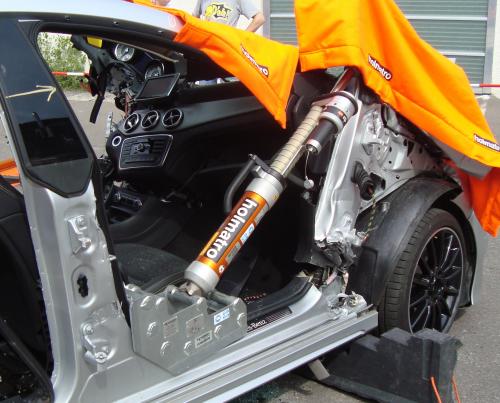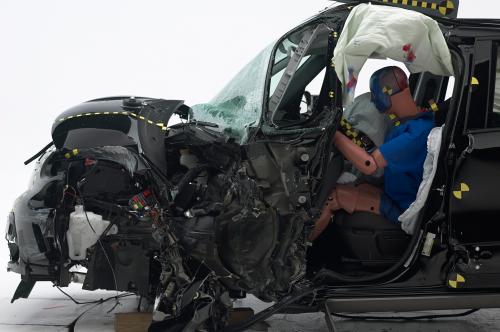Dashboard Relocation - When, How and How Far?
Dashboard relocation is something that is already second nature to many rescuers. As statistically most vehicle collisions involve a frontal ‘offset’ contact between two vehicles, understanding the thought process and methods involved is crucial. A blog is not the place to go through a full prescriptive method, but I do want to share some thoughts with you.
Identifying the need
Establishing the ‘degree of entrapment’ of your patient is crucial and once scene safety and stability are in place, access can be gained to establish if and how the patient is trapped. A high speed impact (even in new stronger vehicles) will often trap the front seat occupant(s) by the feet (pedals), legs and maybe pelvic area too. In the most serious of cases (on the driver’s side) the steering wheel may also be ‘pinning’ the occupant. Full removal of the door will allow a full appraisal of the situation.
At this point remember to consider the simple things first. Can the seat be moved back? Can the steering wheel be removed? I have been to extrications where these simple considerations have negated the need for a full relocation of the dashboard and saved valuable time. If this is not possible then a relocation of the dashboard must be completed. But when do you do this?
Logical sequence
I have had many conversations with operational rescuers about sequential space creation and some (at this point) would remove the side of the vehicle and/or roof before relocating the dashboard. Let me be clear here, it is not for me to say what is right or wrong but consider the following.
You patient is physically trapped by the dashboard. It is now your intention to remove the side and/or roof which will take time. During this time your patient is still trapped. If the patient goes into cardiac or respiratory arrest during this time, they are not coming out immediately. What I would consider to be more logical is to first remove the physical entrapment (the dashboard) and then create ultimate space by removing the side and the roof (if this can be carried out simultaneously then that is perfect). Remember that removing the side of a vehicle (including the B post) will restrict your options for dashboard relocation later!
Another consideration is that the forces involved in the collision that led to the entrapment (kinematics) are likely to be so high, that your patient is surely time critical and it may be that a full roof removal is not going to be expedient in this case. This should be an initial consideration as part of the formulation of your extrication plan.
Amount of Space Required
When we train, dashboard relocation is considered a failure unless we move it approximately 3 feet! Ok, I am exaggerating here, but my point is that there is a distinct difference between the relocation of a dashboard in a training environment and during an operational rescue. Remember: to free a physical entrapment, we simply have to be able to see daylight around our patient; this may mean a movement (or relocation) of no more than a few inches. Of course more movement is advantageous, but we must strike a balance between what is achievable versus the patient’s medical requirements.
The other major difference between ‘extrication’ and ‘training’ is that relocation of a dash during training is (often) on an undamaged car. So we are moving a dash from its primary position to a point where it has never been (this is essentially 'hyperextension'). This requires a longer ram and is wholly unrealistic when we consider our operational need at the side of the road.

TRAINING - Relocated dashboard on previously undamaged vehicle, pushed past its original position during training exercise.
Extrication requires moving the dashboard back towards its original (manufactured) position and I would argue we never have to put it exactly back from where it came from pre-collision.

EXTRICATION - Damaged vehicle (post-collision)
From a vehicle construction point of view, a damaged vehicle has lost a proportion of its strength due to the damage from the collision (its areas of strength have been completely compromised), whereas our training vehicle has no damage and therefore no reduced strength.
Whether you perform a dash lift or dash roll, the critical consideration is the effectiveness of your relief cuts (see my previous blog). So while the techniques have not changed massively, the work involved in removing strength has become more complex.
Conclusion
Relocation of a dashboard is a common requirement and how, when and how far you do it, completely depends on your assessment of the patient, the vehicle and the environment. Just make sure it is logical and well-planned, taking into consideration the critical needs of your patient and having a good understanding of kinematics. Finally, always keep in mind the very different dynamics involved in training and actual extrication.
As ever, I welcome your feedback!
Ian Dunbar